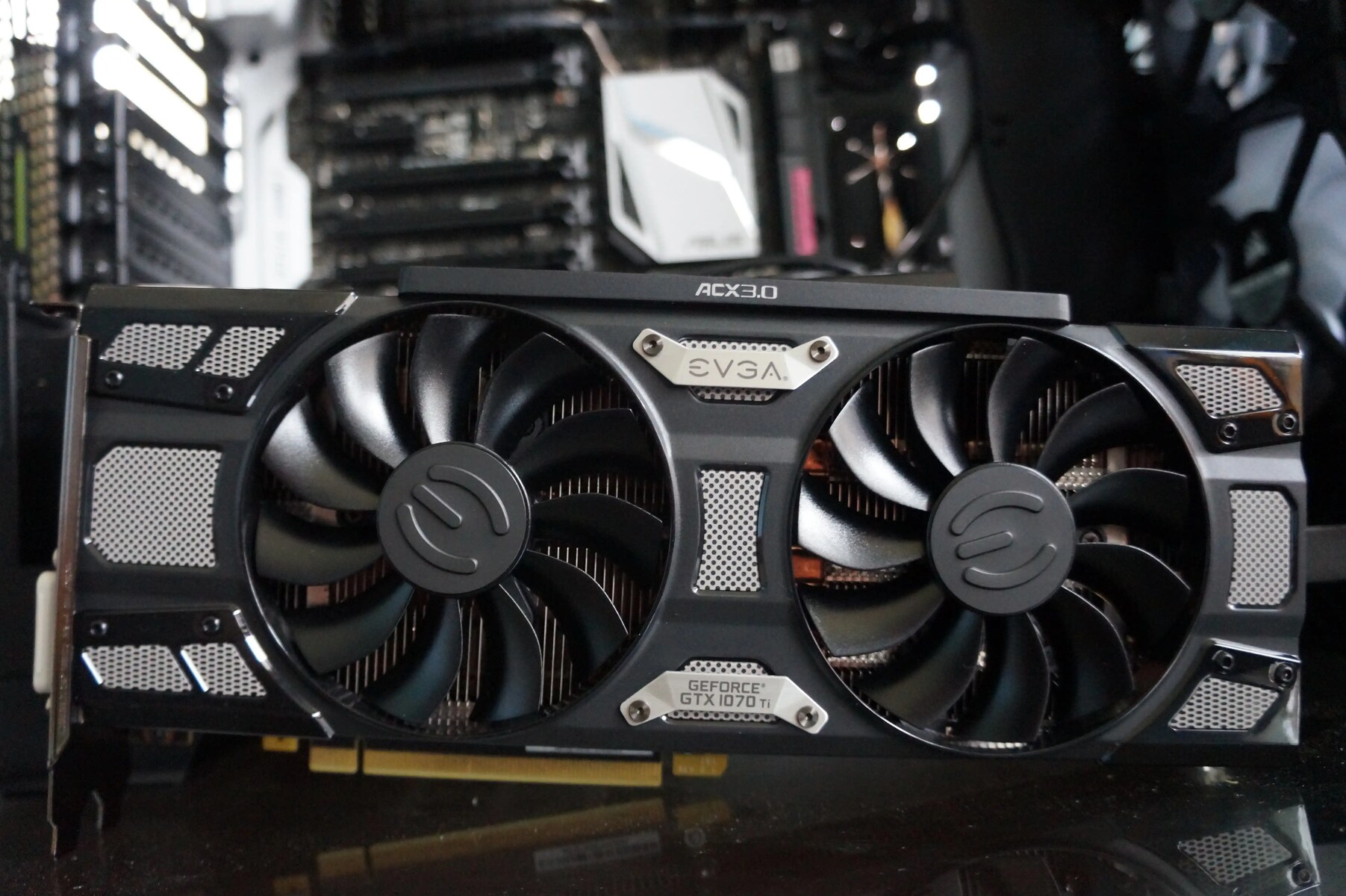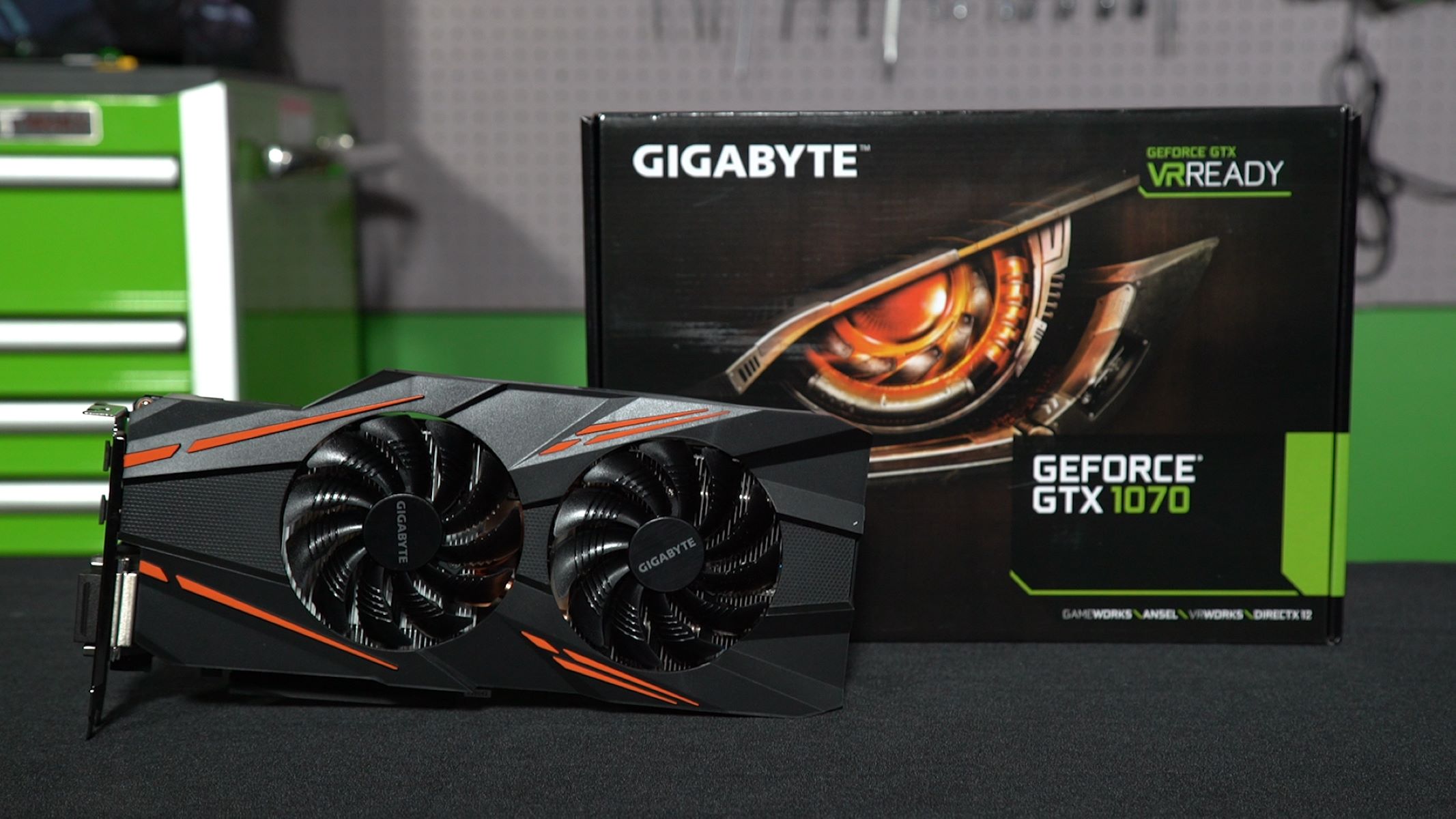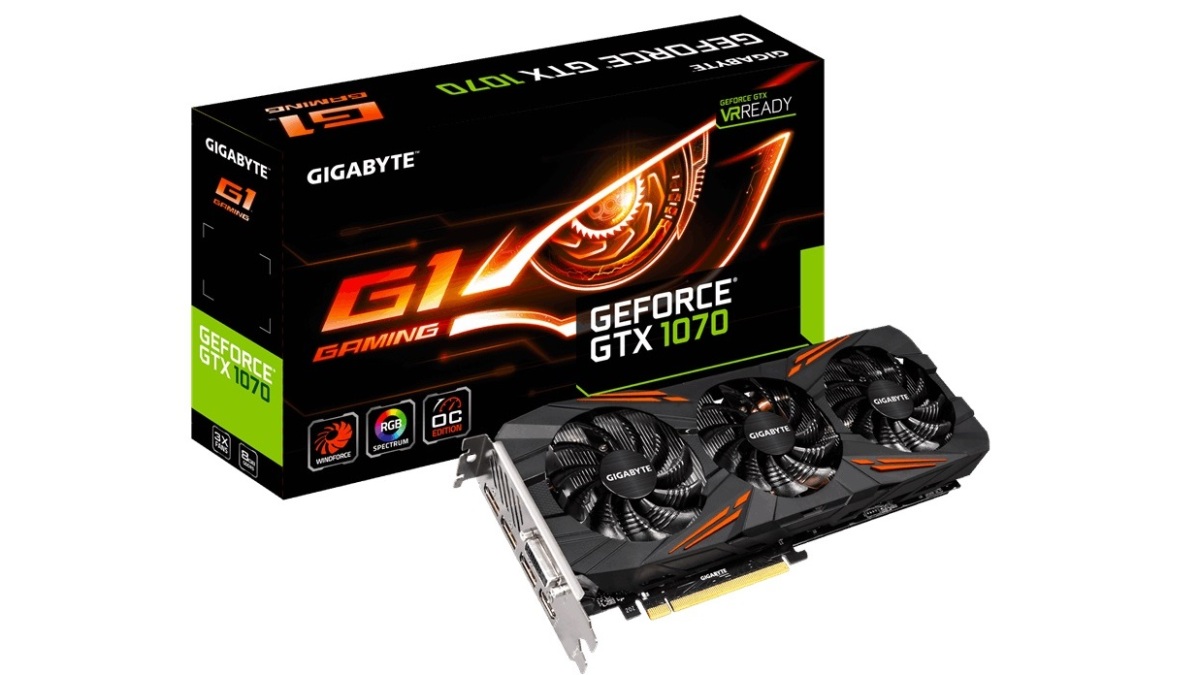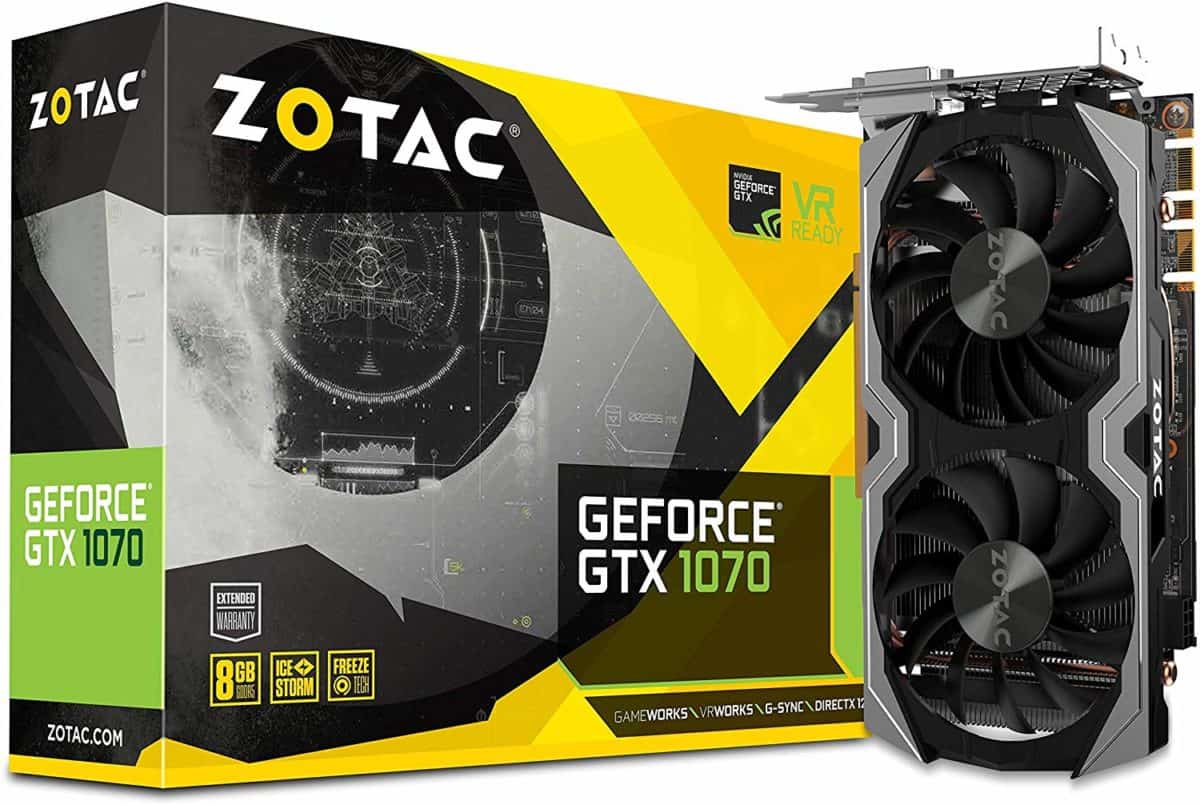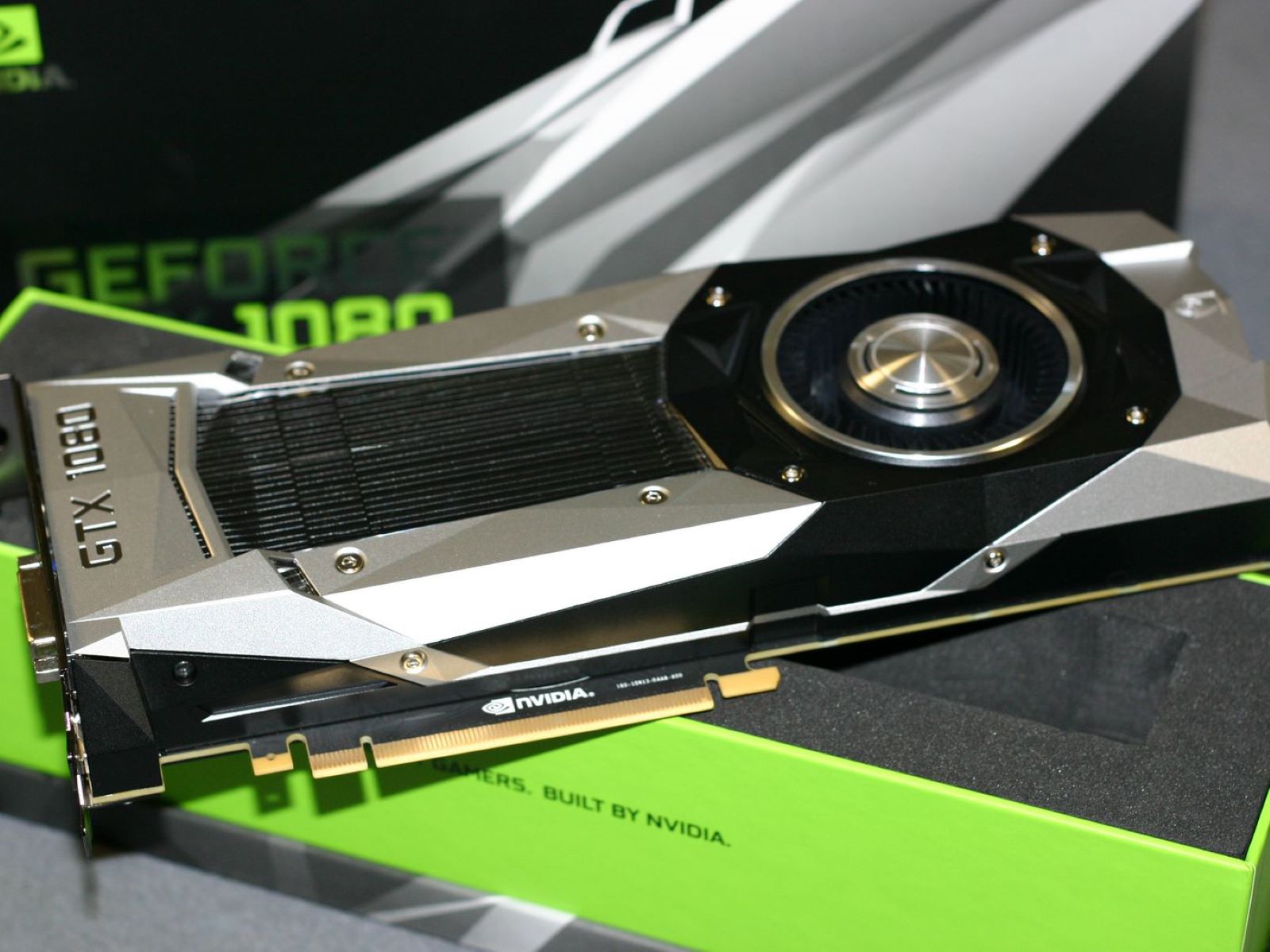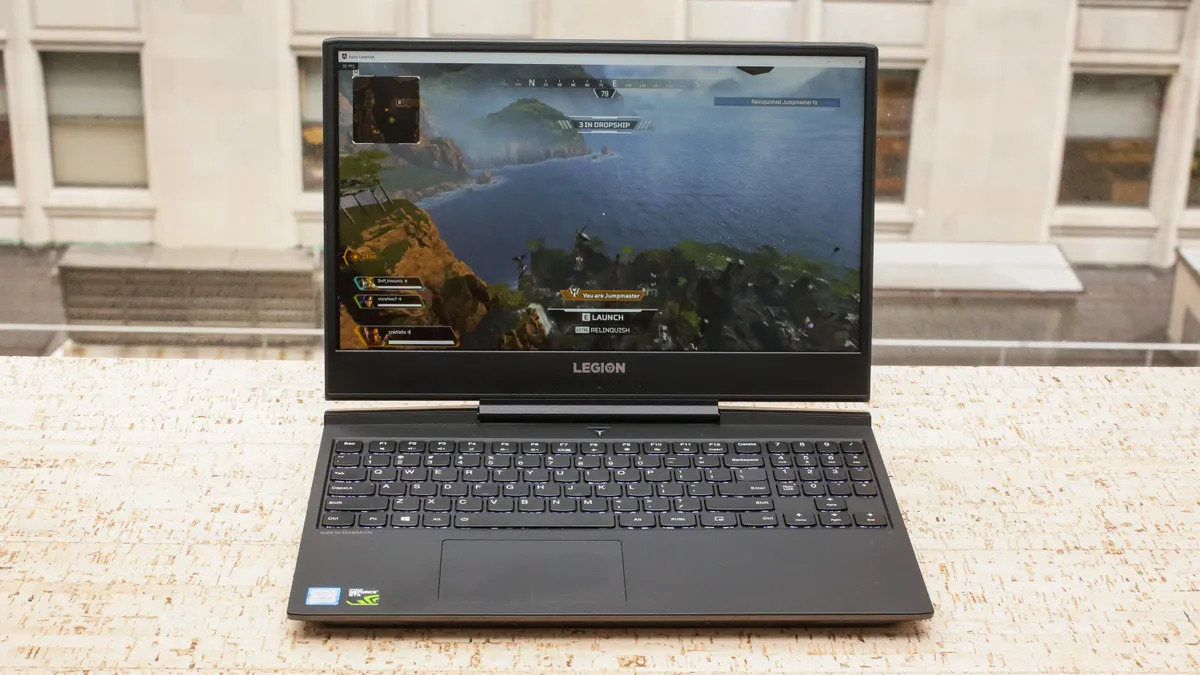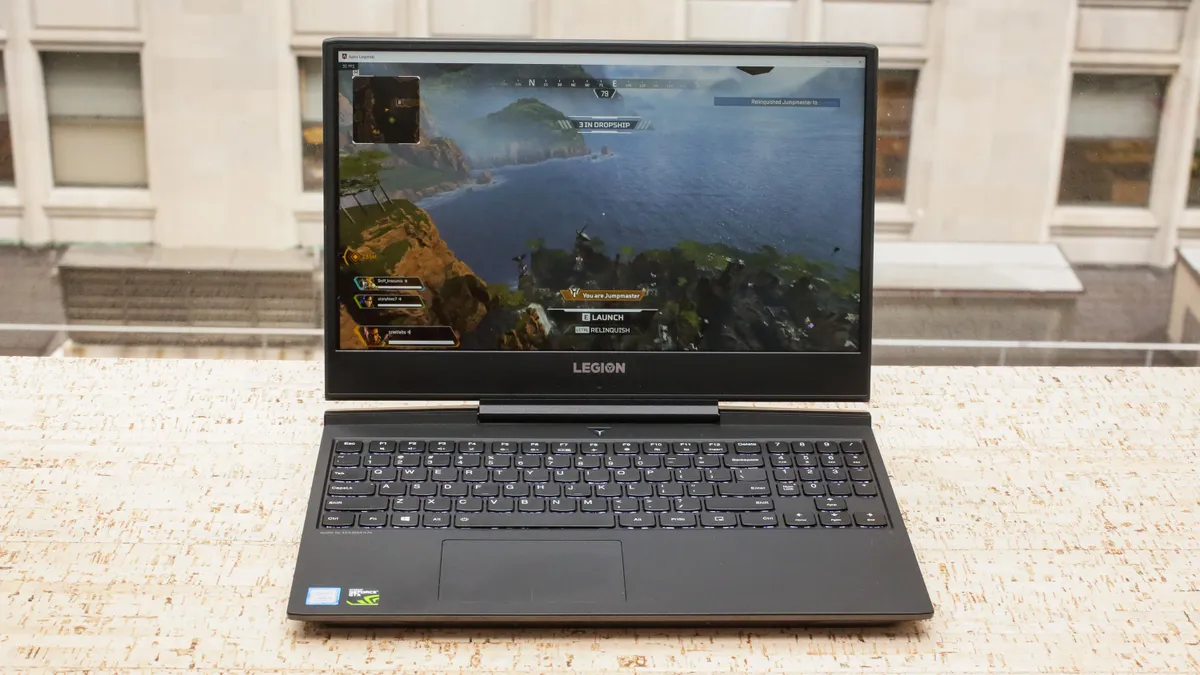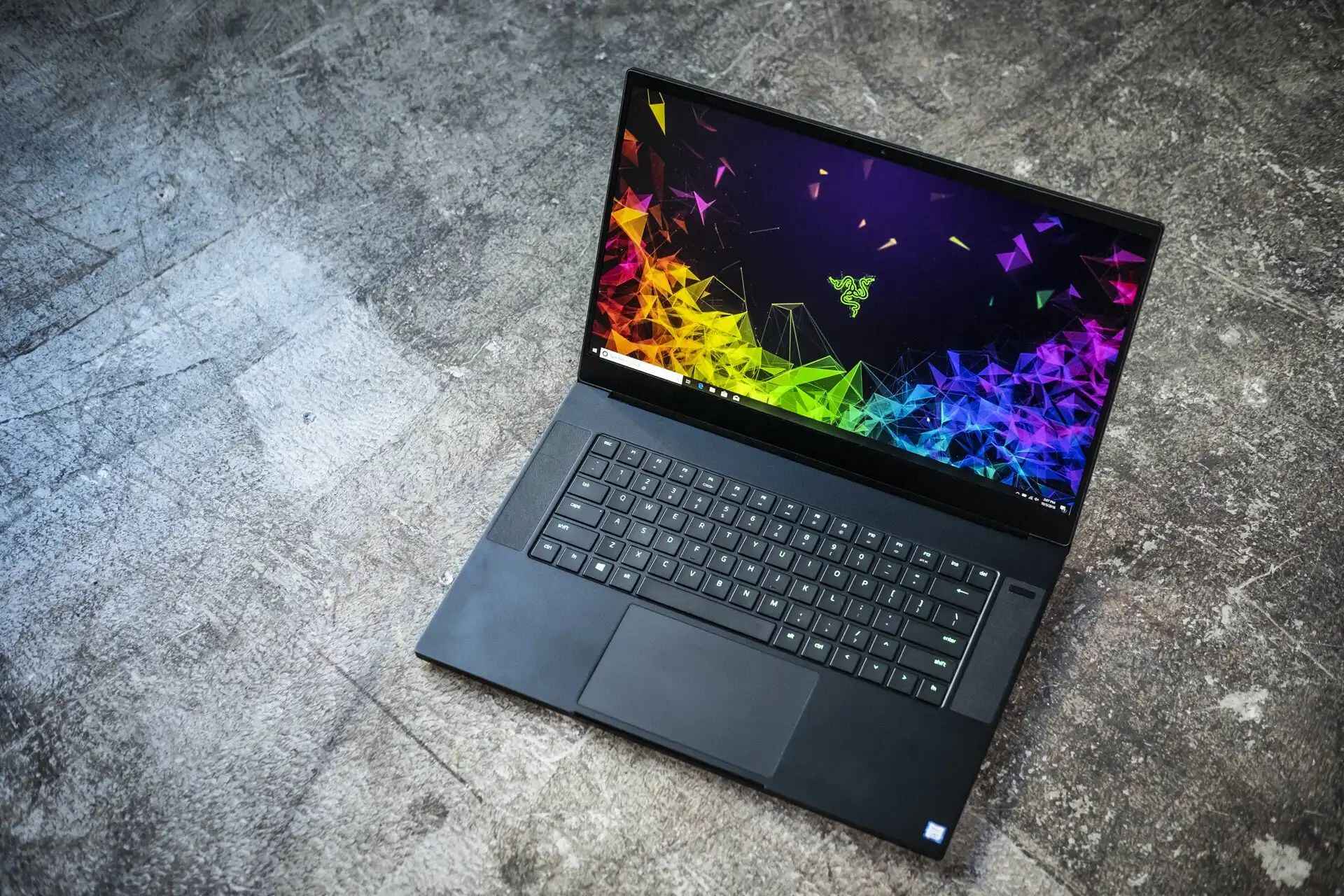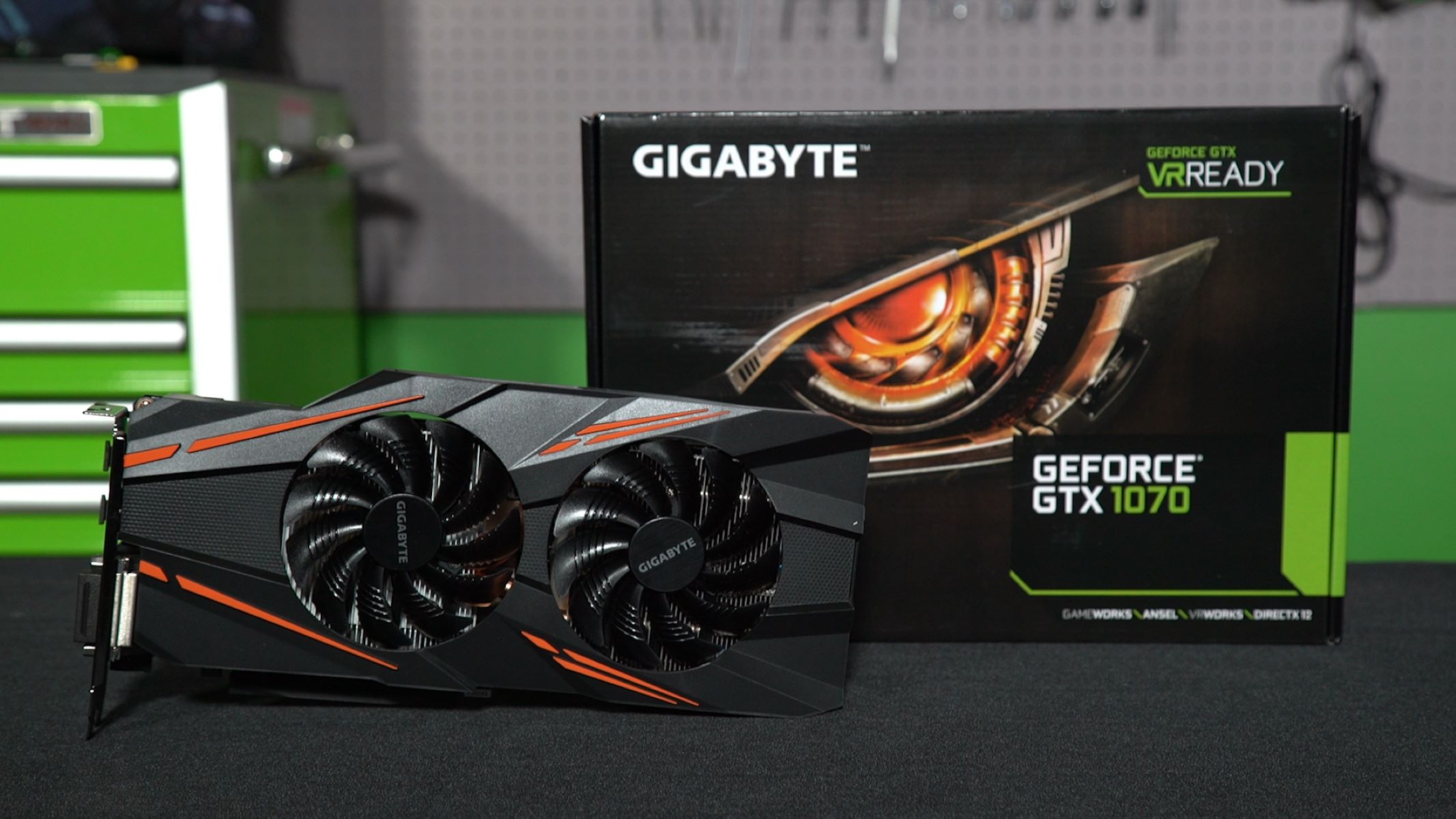Introduction
Are you in the market for a new graphics card? If you’re a gaming enthusiast or a professional who requires high-quality graphics performance, you may have come across the powerful GTX 1070. This popular graphics card from NVIDIA has gained a strong reputation for delivering exceptional visuals and smooth gameplay.
When considering a graphics card, it’s important to take into account the number and types of display ports it offers. Display ports are crucial for connecting your monitor(s) to your graphics card and ensuring the best visual experience.
One of the most commonly used display ports is HDMI (High-Definition Multimedia Interface). HDMI ports allow you to connect your computer to a wide range of devices, such as monitors, TVs, projectors, and more. Having multiple HDMI ports can provide you with the flexibility to easily connect multiple displays or switch between different devices without having to constantly swap cables.
In this article, we will explore the number of HDMI ports available on the GTX 1070 graphics card. We’ll also discuss the importance of HDMI ports, the difference between HDMI 1.4 and HDMI 2.0, and how the GTX 1070 can handle a dual-monitor setup and 4K resolution.
If you’re curious about the capabilities of the GTX 1070 and want to know how many HDMI ports it offers, keep reading to find out!
What is a GTX 1070?
The GTX 1070 is a high-performance graphics card developed by NVIDIA, a leading manufacturer of graphics processing units (GPUs). It belongs to the GeForce 10 series, which is renowned for its powerful and efficient GPUs. The GTX 1070 is designed to meet the demands of gamers, content creators, and professionals who require exceptional graphics performance.
With its advanced architecture and cutting-edge technology, the GTX 1070 delivers smooth and immersive gameplay, as well as enhanced graphics rendering for tasks such as video editing, 3D modeling, and rendering. It boasts impressive specifications that make it capable of handling even the most demanding graphics-intensive applications.
The GTX 1070 is equipped with a large number of CUDA cores, which are parallel processing units that accelerate tasks related to graphics rendering. These cores work together to perform complex calculations and deliver realistic and lifelike visuals.
In addition to its powerful processing capabilities, the GTX 1070 features a high memory bandwidth, ensuring quick data transfer between the GPU and the computer’s memory. This helps to reduce latency and maximize performance, resulting in faster loading times and smoother graphics.
Furthermore, the GTX 1070 supports NVIDIA’s advanced technologies, such as NVIDIA G-SYNC and VR ready, which enhance the gaming experience and make it compatible with virtual reality applications.
Overall, the GTX 1070 is a versatile and high-performance graphics card that offers exceptional graphics capabilities, making it an excellent choice for gamers, content creators, and professionals seeking top-notch graphics performance.
Why do you need HDMI ports on a GTX 1070?
Having HDMI ports on a GTX 1070 is essential for a variety of reasons. HDMI (High-Definition Multimedia Interface) is a widely used audio/video interface that allows for the transfer of high-quality digital audio and video signals. By having HDMI ports on your graphics card, you unlock several benefits and functionalities:
1. Connectivity: HDMI ports provide a convenient way to connect your GTX 1070 to various external devices such as monitors, TVs, projectors, and home theater systems. This enables you to enjoy your gaming or media content on larger screens or share your work with others in a professional setting.
2. Flexible display options: Multiple HDMI ports on the GTX 1070 offer flexibility in your display setup. You can connect multiple monitors and create an extended desktop environment for multitasking, increasing productivity, or enjoying immersive gaming with an expanded field of view.
3. Audio and video transmission: HDMI supports both audio and video transmission over a single cable, eliminating the need for separate audio connections. This simplifies your setup and ensures high-quality audio output alongside stunning visuals, providing a truly immersive experience.
4. Compatibility: HDMI is a widely adopted standard in the industry, making it compatible with a wide range of devices and display technologies. Whether you’re using a traditional monitor, a 4K TV, or a VR headset, having HDMI ports on your GTX 1070 ensures seamless compatibility and supports various resolutions and refresh rates.
5. Ease of use: HDMI cables are easy to use and widely available. They are plug-and-play, meaning you can quickly connect and disconnect devices without the need for complex configurations or additional adapters.
6. Future-proofing: HDMI ports on a GTX 1070 ensure compatibility with modern and upcoming devices. As technology advances, HDMI continues to evolve, with newer versions supporting higher resolutions, refresh rates, and cutting-edge features. By having HDMI ports on your graphics card, you can take advantage of these advancements without the need for hardware upgrades.
Overall, HDMI ports on a GTX 1070 provide the flexibility, convenience, and compatibility required for a seamless and high-quality audiovisual experience. Whether you’re a gamer, content creator, or professional, having HDMI ports on your graphics card is essential for connecting to various display devices and unlocking the full potential of your GTX 1070.
How many HDMI ports does a GTX 1070 have?
The number of HDMI ports on a GTX 1070 can vary depending on the specific model and manufacturer. However, most standard GTX 1070 graphics cards come equipped with at least one HDMI port.
Having a single HDMI port can be sufficient for many users, as it allows you to connect your GTX 1070 to a monitor or TV with HDMI input. This is typically suitable for gaming, content creation, and general computer usage.
However, if you require multiple HDMI ports for your setup, there are GTX 1070 models available that offer multiple HDMI ports. These models often provide added flexibility for those who need to connect multiple monitors, TVs, or other HDMI-enabled devices simultaneously.
It’s important to note that the number and types of ports on a GTX 1070 can also vary depending on the specific aftermarket versions or custom designs released by different manufacturers. Some GTX 1070 variants may include additional display ports such as DisplayPort or DVI-D, which can further expand your connectivity options.
If you specifically require more than one HDMI port on your GTX 1070, it’s advisable to check the specifications of the specific model you are interested in before making a purchase. This way, you can ensure that it meets your connectivity needs and can support your desired display setup.
In summary, while the standard GTX 1070 typically comes with at least one HDMI port, some models may offer multiple HDMI ports to provide additional connectivity flexibility. It’s recommended to review the specifications of the particular GTX 1070 model you are considering to determine the number and types of ports it offers to best suit your requirements.
HDMI 1.4 vs. HDMI 2.0
When it comes to HDMI ports on a GTX 1070, it is important to understand the difference between HDMI 1.4 and HDMI 2.0. Both versions provide high-definition audio and video signals, but there are notable distinctions between the two.
HDMI 1.4:
HDMI 1.4 was introduced in 2009 and is a widely used standard for transmitting high-definition audio and video signals. Here are some key features of HDMI 1.4:
- Maximum Resolution: HDMI 1.4 supports a maximum resolution of 4K (3840×2160 pixels) at 30 frames per second (fps) or 1080p at 60 fps, offering a crisp and detailed visual experience.
- 3D Support: HDMI 1.4 allows for the transmission of 3D content, enabling you to enjoy immersive 3D gaming or watch 3D movies on compatible displays.
- Audio Return Channel (ARC): HDMI 1.4 features an ARC functionality, which allows audio to be sent from the TV back to the audio system without the need for an additional audio cable.
- Ethernet Channel: HDMI 1.4 includes an Ethernet channel, enabling a connection to an internet-enabled device through the HDMI cable, simplifying the setup of a home theater system.
HDMI 2.0:
HDMI 2.0, released in 2013, is an upgraded version of HDMI that offers enhanced features and performance. Here’s what you need to know about HDMI 2.0:
- Higher Bandwidth: HDMI 2.0 significantly increases the bandwidth to support higher resolutions and refresh rates. It can handle 4K resolution at 60 fps, delivering smoother and more detailed visuals compared to HDMI 1.4.
- HDR Support: HDMI 2.0 supports High Dynamic Range (HDR) content, which provides a broader range of colors and better contrast for a more visually stunning experience.
- Audio Support: HDMI 2.0 supports advanced audio formats like Dolby Atmos and DTS:X, offering immersive and high-quality audio output.
- Dual Video Streams: HDMI 2.0 allows for the transmission of two separate video streams simultaneously, making it suitable for multitasking or dual-monitor setups.
Which is better for a GTX 1070?
When it comes to choosing between HDMI 1.4 and HDMI 2.0 for your GTX 1070, it largely depends on the specific requirements of your display setup. If you have a 4K display or plan to utilize HDR content, HDMI 2.0 would be the preferred option as it can fully support these features. However, if you primarily require standard 1080p resolution and don’t plan to use HDR, HDMI 1.4 should suffice.
In summary, HDMI 2.0 offers improved bandwidth, support for higher resolutions and refresh rates, HDR compatibility, and advanced audio formats compared to HDMI 1.4. When selecting a display for your GTX 1070, consider the resolution and features you require to decide whether HDMI 1.4 or HDMI 2.0 is the right choice for your needs.
Dual-monitor setup with a GTX 1070
If you’re looking to expand your display real estate and increase productivity, setting up a dual-monitor configuration with your GTX 1070 can be a game-changer. Not only will it provide you with more screen space, but it can also enhance multitasking capabilities and improve your overall workflow.
Here are some key considerations and steps to follow when setting up a dual-monitor configuration with a GTX 1070:
1. Check ports and cables: Ensure that both of your monitors have compatible ports with the GTX 1070. Typically, HDMI, DisplayPort, and DVI-D are common port options. Use the appropriate cables to connect each monitor to the available ports on your GTX 1070.
2. Configure display settings: Once both monitors are connected, go to your computer’s display settings. On Windows, right-click on the desktop, select “Display Settings,” and you’ll see the options to customize your dual-monitor setup. Here, you can set the position, resolution, and orientation of each monitor according to your preference.
3. Extend your desktop: Select the “Extend these displays” option in the display settings. This will allow you to use each monitor independently and extend your desktop across both screens. You can drag windows and applications from one monitor to the other, enhancing multitasking capabilities and enabling you to work on different tasks simultaneously.
4. Adjust scaling and arrangement: If the size or resolution of your monitors differs, you may need to adjust the scaling settings to ensure that items on both screens appear proportionate. Additionally, you can arrange the position of the screens by dragging and dropping their representation in the display settings, aligning them horizontally, vertically, or in a custom configuration.
5. Customize display preferences: If you have specific preferences for each monitor, such as different background wallpapers or color calibration, you can customize these settings individually through the display settings. This allows you to personalize your dual-monitor setup to suit your preferences and workflow.
6. Test and optimize: After setting up your dual-monitor configuration, it’s essential to test the setup and ensure that everything is working correctly. Open different applications, move windows across the screens, and verify that the system recognizes both monitors. If required, you can fine-tune settings further to achieve optimum performance and visual experience.
Setting up a dual-monitor configuration with a GTX 1070 can greatly enhance your productivity, whether you’re a gamer, professional, or content creator. The expanded screen space allows for better organization, easier multitasking, and seamless workflow management. With the right setup and configuration, you’ll unlock the full potential of your GTX 1070 and enjoy a more immersive and efficient computing experience.
GTX 1070 and 4K resolution
When it comes to gaming or content creation, achieving a high-resolution display is often a top priority. The GTX 1070 is a powerful graphics card that can handle 4K resolution, providing an immersive and detailed visual experience. Let’s delve into how the GTX 1070 performs with 4K resolution and what you need to consider.
1. Graphics performance: The GTX 1070 is designed to deliver exceptional graphics performance, making it more than capable of handling 4K resolution. With its high number of CUDA cores and ample VRAM, it can render detailed textures, handle complex lighting effects, and provide a smooth gaming experience at 4K resolution.
2. Display capabilities: To enjoy 4K resolution with a GTX 1070, you’ll need a monitor that supports the 3840×2160 pixel resolution. Make sure your monitor is equipped with an HDMI 2.0 or DisplayPort 1.4 connector, as these provide the necessary bandwidth to support 4K resolution at higher refresh rates.
3. Game optimization: Some graphics-intensive games may require optimization settings to be tweaked to run smoothly at 4K resolution with the GTX 1070. By adjusting the in-game graphics settings, such as lowering anti-aliasing or shadow quality, you can strike a balance between visuals and performance for a smooth gaming experience.
4. Content creation: The GTX 1070’s power also extends to content creation tasks such as video editing, 3D rendering, and graphic design at 4K resolution. With its CUDA cores and VRAM capacity, it can handle rendering complex scenes and processing large files, resulting in faster render times and smoother workflow.
5. VR and 4K: The GTX 1070 is also VR-ready, meaning it can handle virtual reality gaming at 4K resolution. With VR headsets becoming more advanced and offering higher resolutions, the power of the GTX 1070 ensures a smooth and immersive VR experience at the highest resolution possible.
It’s important to note that while the GTX 1070 is capable of supporting 4K resolution, achieving a consistent and optimal performance will also depend on factors such as the specific game or application requirements, as well as your system’s overall configuration. To make the most of 4K resolution with a GTX 1070, ensure that your system has adequate cooling and ventilation to handle the increased load that higher resolutions demand.
In summary, the GTX 1070 is a capable graphics card that can handle 4K resolution, providing a detailed and immersive visual experience for gaming and content creation. With its powerful performance and compatibility with modern displays, the GTX 1070 allows you to enjoy the crisp, sharp visuals of 4K resolution in your favorite games, applications, and media content.
Conclusion
The GTX 1070 is a powerhouse graphics card that offers exceptional performance and versatility for gamers, content creators, and professionals. With its powerful processing capabilities, high memory bandwidth, and advanced features, it’s no wonder why the GTX 1070 has gained a solid reputation in the graphics card market.
In this article, we explored the importance of HDMI ports on a GTX 1070 and how they contribute to a seamless audiovisual experience. We discussed the number of HDMI ports available on the GTX 1070, with some models offering multiple ports for enhanced connectivity options.
We also delved into the difference between HDMI 1.4 and HDMI 2.0, highlighting their respective features and capabilities. Understanding these distinctions can help you make an informed decision when selecting a display or device that is compatible with your GTX 1070.
Furthermore, we examined the benefits of setting up a dual-monitor configuration with a GTX 1070, which can greatly enhance productivity and multitasking capabilities. The expanded screen space allows for better organization and workflow management, catering to the needs of gamers, professionals, and content creators alike.
Lastly, we explored how the GTX 1070 performs with 4K resolution, emphasizing its impressive graphics processing capabilities and compatibility with high-resolution displays. Whether you’re gaming or engaging in content creation tasks, the GTX 1070 ensures an immersive and detailed visual experience at 4K resolution.
In conclusion, the GTX 1070 is a top-notch graphics card that offers exceptional performance, connectivity options, and support for high-resolution displays. Its capabilities make it an ideal choice for gamers, content creators, and professionals seeking powerful and reliable graphics processing power. Consider your specific requirements and display preferences to maximize the potential of your GTX 1070 and enjoy an enhanced audiovisual experience.







